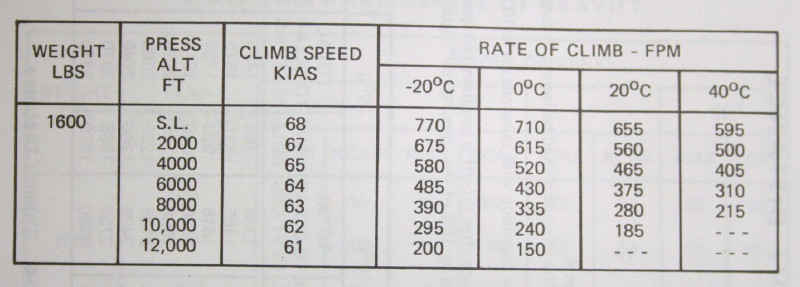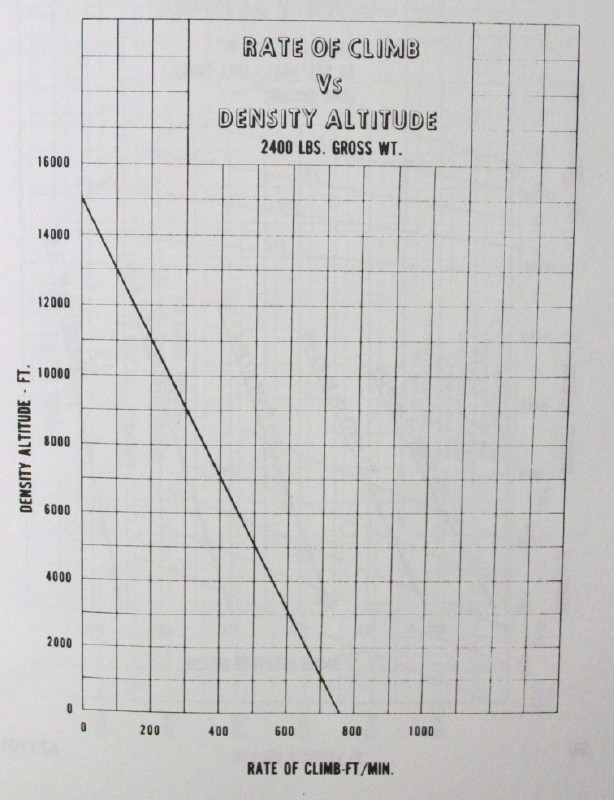It is important to note the drastic effects density altitude has on climb performance. On a hot, humid day, the airplane may just barely climb. The pilot must be aware of the density altitude and airplane's climb performance prior to taking off, in order to assure the airplane will be able to clear any obstructions that exist off the end of the runway. If the climb performance is insufficient, the weight of the airplane must be reduced or the flight must be delayed or canceled.
The manufacturer publishes the following climb speeds for the airplane:
Vx - The best angle of climb speed. Flying the airplane at an airspeed of Vx will give the greatest altitude gain over a specific distance. Flying at any other airspeed will cause the airplane to fly through a greater distance to reach a particular altitude. Vx is used for obstruction clearance. For example, if an obstruction existed off the end of the runway, the pilot would takeoff and climb at Vx until the obstruction was cleared. Then, the pilot would probably transition to Vy, in order to reach the cruise altitude as quickly as possible.
Vy - The best rate of climb speed. Flying the airplane at an airspeed of Vy will give the greatest altitude gain in the least amount of time. Flying at any other airspeed will cause the airplane to take longer to reach a particular altitude.
Below is an example of a table showing best rate of climb. Rate of climb is shown as adjusted by temperature and pressure altitude, under the conditions of a particular airspeed being flown and at 1,600 pounds.
This chart shows best rate of climb in graph format. Density altitude is entered on the left and rate of climb is given on the bottom of the chart. Again, the type of chart shown in the performance documentation varies with the aircraft manufacturer.
The following chart is used in cross country planning to approximate the time, fuel, and distance required to climb to a particular altitude.
Example: What is the time, fuel, and distance to climb to a pressure altitude of 4,500 feet, with a takeoff field elevation of 1,000 feet? According to the table, 8 minutes, 0.85 gallons, and 7 NM would be required to climb to 4,500 feet. Since the field elevation is 1,000 feet, that portion of the climb will not have to be performed. As a result, 2 minutes, 0.2 gallons, and 2 NM may be subtracted to give the answer of 6 minutes, 0.65 gallons, and 5 NM.
According to the notes, 0.8 gallons must be added to the fuel burn to account for engine start, taxi, and takeoff, giving a fuel revised fuel burn of 1.45 gallons.


